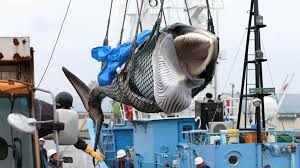In 1982 the International Whaling Commission declared that there would be a pause in commercial whaling on all species of large whales, effective in the1985/1986 season. After more than a century of unrestricted hunting, there was widespread acknowledgement that ‘whale stocks’ had been so depleted that a number of species faced a threat of imminent extinction if the practice continued. This moratorium on commercial whaling remains in effect today.
Currently, a number of nations, Canada among them, take advantage of certain exemptions in this moratorium. The ruling allows for “non-zero whaling quotas for aboriginal subsistence”, which makes possible the killing of large numbers of belugas and narwhales in Canada’s north. (We’ll have more on that in an upcoming post.) As well, member nations are permitted to issue ‘Scientific Permits’ to their citizens. Until recently, it was under this guise of research that Japan practiced what was clearly a commercial hunt in the Antarctic. Iceland and Norway have chosen to simply ignore the ban on commercial whaling altogether.
In 2019, Japan made the decision to leave the IWC, and to openly resume commercial whaling in its own territorial waters. They will take a self-determined quota of primarily sei, minke, and Bryde’s whales. Much like their drive-hunts that kill large numbers of dolphins every year, these will be unregulated, and without any kind of accountability to an international body.
This is the Japanese government showing utter contempt for international agreements aimed at conservation. It appears to be some kind of display of national pride – perhaps an assertion of Japanese sovereignty and self-determination. Otherwise, it’s really hard to come up with a rationale for knowingly damaging their country’s reputation, particularly so close to hosting the Olympic games. Whaling in Japan continues to exist in part because the industry is subsidized by Japanese taxpayers, and the demand for whale meat has fallen in recent years, just as it has in most countries.
So how did we get here? Well, there was a flaw in our program, from the very start. When the decision was made to put a moratorium on whaling it was based on conservation, period. Populations were referred to as ‘whale stocks’. A whale was thought of as a commodity to be harvested, but one which was being taken too quickly at the time, risking the long-term viability of an industry. We needed to give whales time to recover, or risk losing them altogether.
For the most part, the cessation of whaling has worked. Many species – though certainly not all – have seen a rebound in their numbers. This is despite the fact that our oceans have become much less hospitable to whales since 1986. The accumulation of plastics and discarded fishing gear, warming waters with increased acidification and declining salinity, depletion of the organisms whales eat, and so on. Not to mention underwater noise from human activities, boat collisions, etc. Despite these threats, which kill large numbers of whales every year, many species have managed to recover to a certain extent.
So the moratorium was certainly a crucially important step for us to take, from a conservation point of view.
This success, unfortunately, opens the door to the argument that a commercial hunt of some species has once again become ‘viable’. In the 1980s many of us may have thought that sounded like a good thing – but what have we learned since then?
We’ve learned that whales play a critically important role in the sequestering of carbon. We know of their importance to healthy marine ecosystems. And the economic benefits – which the Marine Mammal Commission (an independent agency of the US government) estimated at about $2 million per whale, and over $3 trillion for all large whales taken in the aggregate. And most important of all, we’ve learned a great deal about cetacean intelligence, their intense social bonds, and the likelihood that a number of species have unique languages and cultures.
Can we really claim for ourselves the right to treat such creatures as commodities?
Fortunately, change appears to be coming, driven by a growing public awareness. In Iceland, the last two whaling companies declared that there will be no hunts this year (although a decision on future years is yet to come). In the first case, most killed were minke whales for domestic consumption. With declining consumer demand, along with new regulations around Iceland’s new whale sanctuaries which make it necessary for whalers to go further out to sea (thus driving up costs), the enterprise is no longer profitable. In the second case, most killed were fin whales for which the meat was exported to Japan. This has also become unprofitable when competing with Japan’s subsidized whaling industry.
So here, perhaps, is the opportunity. A chance for the people of Japan to demand that their tax dollars no longer be put to this use. Damaging the country’s reputation to prop up an industry with a product fewer and fewer people want. And an industry which inflicts extraordinary cruelty on a fellow-sentient being.
For The Orca’s Voice,
Dani, Canadian Cetacean Alliance



Leave a Reply